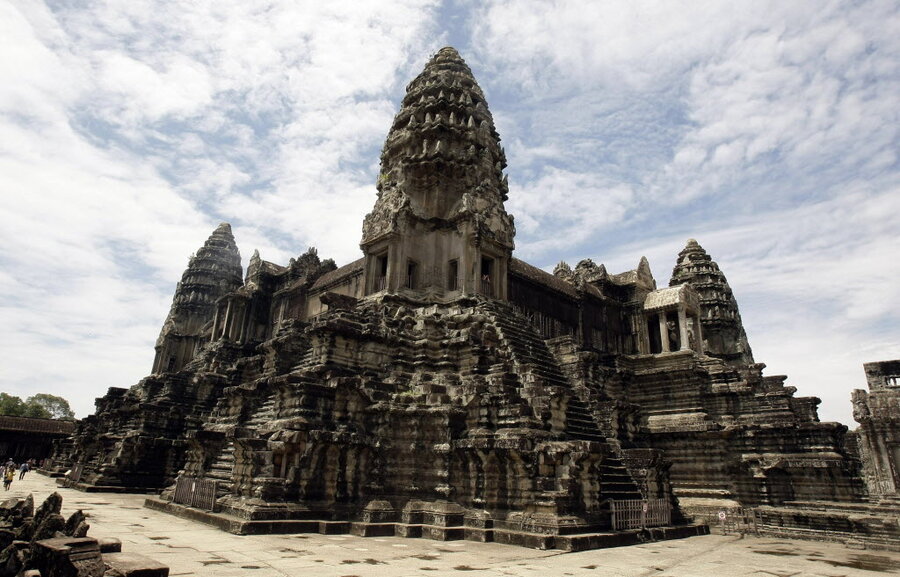Cambodian lost city not so lost after all
Loading...
Researchers have clarified that Cambodia’s “lost city,” found in the swelter of the country’s northwestern jungles, was not so lost at all. It is, however, bigger than once thought, prompting scientists to revise their previous beliefs about the character – and the eventual collapse – of the Khmer Empire.
Researchers from the University of Sydney's archaeological research center in Cambodia said that they had known about Mahendraparvata – an ancient city from the Khmer Empire some 1,200 years old – for decades, but that before the use of Lidar technology, which allowed them to probe the vast undergrowth with lasers that revealed the buried city’s shape, they had not understood just how extensive the abandoned one-time seat of the Khmer kingdom was. The city had previously been misreported as “discovered" in a "world exclusive" from The Sydney Morning Herald.
“It is an exaggeration to say a lost city has been found because if you’re working in Cambodia you know it’s been there since the 1900s," Jean-Baptiste Chevance, director of the Archaeology and Development Foundation and the project’s lead archaeologist, told The Cambodia Daily. "The main discovery is a whole network of roads and dykes that were linking monuments that were already known."
The city's unexpected size suggests that the Khmer Empire, which ruled Southeast Asia from about 800 A.D. to 1400 A.D., was more urban than previously imagined: Mahendraparvata was a planned, well-laid-out city that was formerly linked with a system of roads and canals to the Angkor Wat temples, built some 350 years later also in Siem Reap province. Scientists had previously thought that the kingdom was more a loosely organized collection of population centers. The findings are due to be published in the Proceedings of the National Academy of Sciences.
"We identify an entire, previously undocumented, formally planned urban landscape into which the major temples such as Angkor Wat were integrated," the researchers wrote in a statement published by NBC.
The researchers also offered additional comment on why it was that the Khmer Empire, once decadent in its stone temples ascending toward the clouds, collapsed into ruin, not to be reincorporated into the country’s story again until the French reintroduced the memory to Cambodian national identity. Now, researchers have suggested that periods of megadrought, combined with practices that caused environmental degradation, were to blame for the fall of the empire – a recipe thought to have led to the decline of massive, ancient civilizations elsewhere in the world.
“The lidar data reveal anthropogenic changes to the landscape on a vast scale, and lend further weight to an emerging consensus that infrastructural complexity, unsustainable modes of subsistence and climate variation were crucial factors in the decline of the classical Khmer civilization,” the researchers wrote.
Once abandoned to time, the royal city was worked to rubble as a millennium of industrious vegetation and monsoon rains did their worst on its stone temples. The mountain, Phnom Kulen, which once observed Cambodia at a cultural peak, would go on to witness one of the country's worst moments, becoming a Khmer Rouge stronghold in the 1970s, when the government murdered about a fifth of its population.
Throughout all that, the mountain has remained a spiritual place, host to tens of thousands of pilgrims each year.






